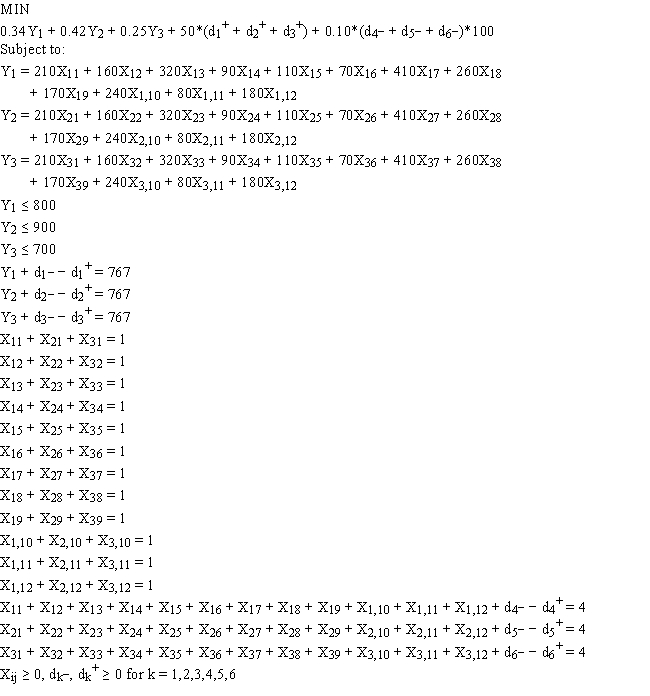Exhibit 7.4
The following questions are based on the problem below.
Robert Gardner runs a small, local-only delivery service. His fleet consists of three smaller panel trucks. He recently accepted a contract to deliver 12 shipping boxes of goods for delivery to 12 different customers. The box weights are: 210, 160, 320, 90, 110, 70, 410, 260, 170, 240, 80 and 180 for boxes 1 through 12, respectively. Since each truck differs each truck has different load capacities as given below:  Robert would like each truck equally loaded, both in terms of number of boxes and in terms of total weight, while minimizing his shipping costs. Assume a cost of $50 per item for trucks carrying extra boxes and $0.10 per pound cost for trucks carrying less weight.
Robert would like each truck equally loaded, both in terms of number of boxes and in terms of total weight, while minimizing his shipping costs. Assume a cost of $50 per item for trucks carrying extra boxes and $0.10 per pound cost for trucks carrying less weight.
The following integer goal programming formulation applies to his problem.
Y1 = weight loaded in truck 1; Y2 = weight loaded in truck 2; Y3 = weight loaded in truck 3;
Xi,j = 0 if truck i not loaded with box j; 1 if truck i loaded with box j.  Given the following spreadsheet solution of this integer goal programming formulation, answer the following questions.
Given the following spreadsheet solution of this integer goal programming formulation, answer the following questions. 
-Refer to Exhibit 7.4. Given the solution indicated in the spreadsheet, which trucks, if any, are under an equal weight amount, and which trucks are over an equal weight amount?
Definitions:
Cultural Authenticity
The degree to which an object, practice, or activity faithfully represents a particular culture or tradition.
Licensing Fees
Payments made to obtain permission to use someone else’s property, such as intellectual property, under agreed conditions.
Popular Culture
Encompasses the set of ideas, perspectives, attitudes, images, and other phenomena that are within the mainstream of a culture, especially those disseminated via mass media.
Q3: The terms b<sub>0</sub><sub> </sub>and b<sub>1</sub><sub> </sub>are referred
Q21: Multi-objective linear programming MOLP)provide<br>A)a way to analyze
Q22: A company makes products A and
Q42: Decision variables in network flow problems are
Q48: The difference between the right-hand side RHS)values
Q52: Why might a decision maker prefer a
Q52: In solving the NLP problem,Solver produced a
Q57: A robust solution to an LP problem<br>A)is
Q74: Suppose that a data set contains a
Q85: Refer to Exhibit 13.7.What is the Kendall